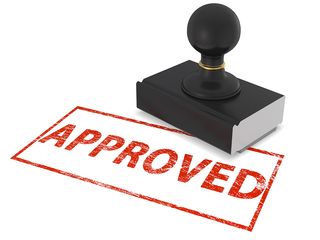Purpose of the 21-0779
The VA form 21-0779 “Request for Nursing Home Information In Connection With Claim for Aid and Attendance” is used only for certain non-service-connected pension claims, and its primary purpose is to document the level of care required by a claimant or a claimant’s dependent. The VA form 21-0779 is completed specifically for individuals who are residents of nursing homes. The importance of documenting this level of care is twofold:
- To support a claim for additional pension above and beyond the base level;
- To support the need for certain medical expenses.
There are three levels of non-service-connected pension that a claimant may qualify for: Base pension, Housebound, and Aid & Attendance. The base pension is the lowest pension that a claimant may be awarded. Additional funds are granted if you can document that the claimant is housebound, and even more funds go to those requiring another individual to assist with at least two activities of daily living, or ADLs. The VA also looks at level of care when considering medical expenses to offset income. Therefore, the VA form 21-0779 should document the level of care that justifies the medical expenses being declared. This applies to the claimant’s dependents as much as to the claimant. So for example, the VA will not consider the nursing home facility expense for a veteran’s spouse unless a form 21-0779 is completed for the spouse indicating the need for this level of care.
The VA form 21-0779 is just a single page and is mainly to be completed by a third party; that is, the nursing home. All you need to complete the form is the veteran’s – or claimant’s, if other than the veteran – name(s), and Social Security number(s). When you are completing this form for a living veteran’s spouse or other dependent, that person’s name appears in the field that requests the name of the claimant, even though, strictly speaking, the claimant is the living veteran. When downloaded from the VA website at http://www.va.gov/vaforms/, the 21-0779 has no separate instruction pages. The form is fairly straightforward to fill out, but it still provides a toll-free phone number for those who require assistance completing the form. Despite the fact that you are not completing this form yourself for the most part, you should still review all 21-0779s once completed by the nursing home and before submitting to the VA so that you can confirm that every field is answered.
What to file with the 21-0779
Nothing in particular is required to be filed with the 21-0779 form. If you determine that you do need to file this form, it should be submitted as part of a fully developed claim in order to expedite the processing. If you are filing the VA form 21-0779 with your formal claim, then you do not need to file a VA form 21-2680 “Examination for Housebound Status or Permanent Need for Regular Aid and Attendance” because the former documents that the claimant is in a nursing home and requires skilled nursing care and thus by definition has a permanent need for regular aid and attendance. This will, however, not stop some VA adjudicators from requesting the 21-2680 form in addition to the VA form 21-0779, thus we generally request all our VA clients to get a VA form 21-2680 completed as soon as they have retained us.
Always remember that this form can be used for supporting both a claim for a higher level of pension and the need for certain medical expenses. Keep those two purposes in mind when you are deciding whether or not it needs to be included as part of your VA claim, and when reviewing its completion by the nursing home to make sure there are not unexpected results with your claim.
If you're interested in learning more about the Lawyers With Purpose Cloud Based Workflow System join us on Friday, February 26th at 2EST. Finally…an AUTOMATED law firm system for Estate and Elder Law Attorneys designed to free up your time and get the work out the door quickly and easily! Click here to reserve your spot for this FREE LIVE DEMO! We only have a few spots left so grab your seat today!
By Sabrina A. Scott, Paralegal, The Elder & Disability Law Firm of Victoria L. Collier, PC and Director of VA Services for Lawyers With Purpose.
Victoria L. Collier, Veteran of the United States Air Force, 1989-1995 and United States Army Reserves, 2001-2004. Victoria is a Certified Elder Law Attorney through the National Elder Law Foundation; Author of “47 Secret Veterans Benefits for Seniors”; Author of “Paying for Long Term Care: Financial Help for Wartime Veterans: The VA Aid & Attendance Benefit”; Founder of The Elder & Disability Law Firm of Victoria L. Collier, PC; Co-Founder of Lawyers with Purpose; and Co-Founder of Veterans Advocate Group of America.











